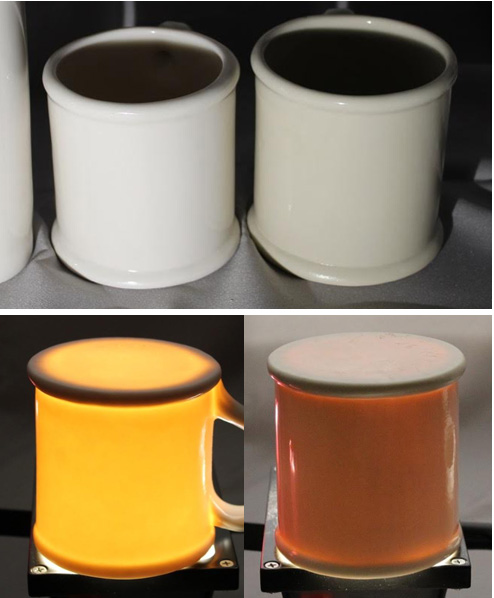| Monthly Tech-Tip | No tracking! No ads! | |
Translucency of Polar Ice compared to another porcelain at cone 6
On the top you can see the color difference. The other porcelain is made from a low TiO2 mix of typical North American kaolins, feldspars and bentonites. Bottom with a light inside: Polar ice on the left is far more translucent. Yet it is not overly mature, it resists fired warping remarkably well. And it is also more plastic (which seems impossible). There is a secret to the translucency that goes beyond the fact that it employs New Zealand kaolin and the percentage of feldspar it has. But I cannot tell you. But if you read this site carefully you will discover it in the most unlikely place!
Related Pictures
Polar Ice translucency vs. Chinese porcelain

This picture has its own page with more detail, click here to see it.
These are fired at cone 6. The Chinese superwhite porcelain body was so short it was unusable for me, I had to add 3% VeeGum to make it plastic enough to throw thin-walled. However, even with the fluxing action of VeeGum, it is only slightly translucent (even in the bright sunlight). When it comes to whiteness, however, it is somewhat better better.
Videos
Links
| Glossary |
Translucency
A highly sought-after property in porcelain, fired close enough to melting to take on the glass-like property of passing light. Translucency implies tendency to warp during firing. |
| Glossary |
Porcelain
How do you make porcelain? There is a surprisingly simple logic to formulating them and to adjusting their working, drying, glazing and firing properties for different purposes. |
Got a Question?
Buy me a coffee and we can talk

https://digitalfire.com, All Rights Reserved
Privacy Policy

